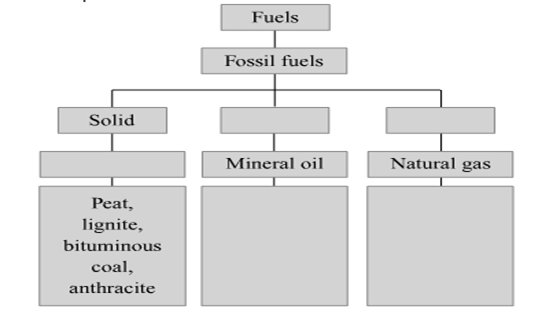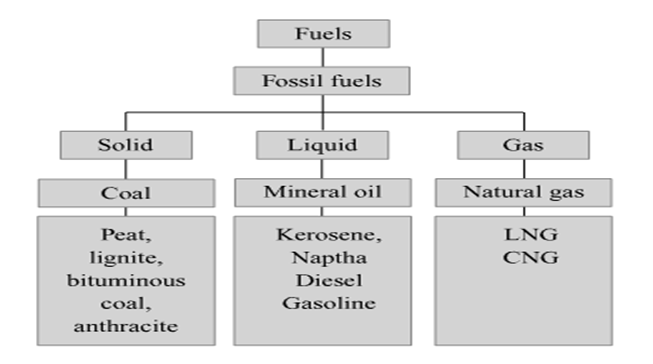Question 1:
Describe natural resources with reference to the following three types.
(a) Mineral resources
Answer
- A mineral resources are a pure inorganic substances that occurs naturally in the Earth’s crust and taken out from the mines.
- Some of them like gold, silver, copper, platinum and bismuth are found in free state.
- While iron, aluminium, mica are found in mixed state called ores. The ores are separated and purified to get metals and non-metals which are used in various manufacturing and chemical industries.
- Besides metals, there are minerals like diamond, ruby, emerald, jade, zircon etc. which are used as gems.
- Coal, petroleum and natural gas are also minerals which are used as fuels.
- Thus, transport and production of electricity depend on mineral resources.
- Mineral resources are non-renewable.
(b) Forest resources
Answer
A forest is defined as an extensive land which is covered by a variety of plants and is a habitat for various species of animals. We know that forests have an important role in the existence of life on earth. These are one of the precious resources which have various functions like:
- Forests perform protective and productive functions.
- It help in maintaining climate, rainfall and oxygen.
- It give timber for housing and furniture, besides various products like paper, rubber and medicines.
- The forests help percolation of water into ground, reduce erosion of soil and control floods.
- Forests maintain balance of atmospheric gases, reduce evaporation and protect wildlife.
But forest cover of the earth is rapidly declining due to increasing human population.
(c) Ocean resources
Answer
Oceans provide both mineral and bio-resources.
Oceans are also important resources and this can be understood by the fact that they cover greater part of earth's surface than land itself.
Mineral resources :
- The mineral resources are Thorium in sand for atomic energy production.
- Mineral oil and natural gas on the sea beds. Oil and gas are used as fuels for electricity generation, motor vehicles and industries.
- The mineral salts yield chemicals such as Sodium, Potassium, Magnesium, Sulphates.
Bio resources :
- Examples of bio resources from oceans include fishes, shells, fungi, shark and cod fish, sea cucumbers etc. which give protein rich food, vitamins, iodine, common salt and nutrient minerals.
Drinking water is also obtained by RO (Reverse osmosis) technology.
In addition, electric power is obtained from wave, currents and tidal energy.
Question 2:
Write answers to the following questions in your own words .
(a) What is meant by fossil fuel? What are their types ?
Answer
The fuels which are made from the dead plants and animal that were buried millions of years ago and subjected to extreme pressure and temperature in the earth’s crust due to geological processes are called ‘fossil fuels’.
The different types of fossil fuels are:
- Solid Fuels : Coal- Also known as black gold, it is black in colour. It is as hard as stone and on burning, it releases a lot of energy.
- Liquid Fuels : Petroleum: Also known as mineral oil, it is used in obtaining various other substances like gasoline, diesel, kerosene etc.
- Gaseous Fuels: Natural gas: Found in association with petroleum and is used in the forms of CNG and LNG.
(b) Make a list of the components we obtain from mineral oil.
Answer
Crude mineral oil is a mixture of many hydrocarbon compounds.
Components which can be obtained from mineral oil are:
- petroleum
- aviation petrol
- gasoline
- diesel
- kerosene
- naptha
- lubricating oil
- tar
(c) What do we get from forests ?
Answer
Forests provide numerous products to man.
- The fruits and tubers from the forests are a source of nutritive food.
- The timber is used in various industries and in everyday human use like furniture.
- Herbs from forests are used as medicine.
- The leaves of certain trees are used in making disposable plates.
- The raisin from the trees is used for manufacturing gum.
- We obtain cellulose fibres, paper rubber, gum and aromatic substances.
- In addition, we get fruits, bulbs, roots, sealing wax, catechu and dyes.
(d) What are the items included in ocean resources? What are their uses?
Answer
Oceans are also important resources and this can be understood by the fact that they cover greater part of earth's surface than land itself.
Oceans have two types of resources :
(1) The non-living resources of minerals and fossil fuels.
- The mineral resources include Thorium and uranium from sand deposits and Mangnese, Magnesium, Potassium, Iodine, Sodium and Sulphate from salt.
- The fossil fuel resources are crude oil and natural gas.
- Thorium and Uranium are used for production of atomic energy and electricity.
- While salts of elements mentioned are used for industrial productions from soaps to cloth and paper.
- Oil and natural gas are used energy sources for industries and motor vehicles.
(2) The living or biological resources are
- Fishes, dried shrimps and Bombay duck powder, shells, shark and cod fishes and sea cucumbers.
- Fishes provide protein food, fish liver oils give vitamins A & D,
- Dried trash fish powder as poultry feed,
- Shells for decorative articles.
- Active substances from sea cucumbers for treating cancer and tumors.
(e) Why should we prevent the wastage of fuel used for vehicles?
Answer
Coal and petroleum were formed from the degradation of biomass millions of years ago. The reserves of these resources are limited and they take a very long time to form. If these are not used judiciously, they will soon get exhausted.
On combustion in the vehicle engine, the fuels give out exhaust gases which are harmful and cause air pollution. Therefore, we should prevent wastage of fuels used in vehicles.
(f) Why is the diversity of plants and animals in the forests declining?
Answer
The diversity of plants and animals is declining in the forests because of several reasons. These reasons can be summed up in the following factors:
- Habitat loss and fragmentation: Owing to increasing human population more land is required. The forests are clean cut to make land for dwelling, farming and industries. This is the major cause for loss of biodiversity.
- On account of hunting and poaching animal population is declining. Reduced diversity of plants does discourage variety of wildlife to take shelter and have food.
- In farming only useful grains and vegetables as food are grown. In cultivated forests suitable few varieties used for manufacturing goods are planted. Such practices are reducing diversity of plants in forests.
- Over-exploitation: Humans, because of their greed and increased exploitation of natural resources, have contributed to the endangerment of commercially important species of plants and animals.
- Co-extinction: When plants or animals become extinct, other plants or animals that are dependent on it in an obligatory way also become extinct.
(g) Write the names of five minerals and the useful substances obtained from them.
Answer
Minerals are naturally occurring solid substances that have a characteristic internal structure and properties. They are formed through geological processes that take millions of years. Examples of minerals are:
- Iron ore: Iron ore is used to make metal iron and steel. These are used for making heavy machinery, railway tracks, farming implements and articles such as needles, pins etc.
- Manganese: These are used in the preparation of medicines, electrical appliances and also for giving a pink tinge to glass.
- Bauxite: Bauxite is the most important ore containing 55% aluminium. It is used in aeroplanes, transport vehicles, electric wires.
- Copper: Copper being a very good conductor of electricity, is used to make radios, telephones, vehicles, kitchen utensils, statues.
- Mica: Mica is used in ayurvedic medicines, dyes, electric machines and equipments, wireless communication equipments.
(h) Name the two important stages in the process of obtaining metals from ores ?
Answer
The two important stages in the process of obtaining metals from ore are extraction and purification.
Question 3:
What steps taken for protection and conservation of natural resources ?
Answer
(1) Reserves of natural resources are limited and their excessive use should be controlled otherwise there will be early depletion.
(2) Living resources are renewable but excessive harvesting can lead to depletion. They require conservation of so that they can regenerate year after year.
(3) We must keep a control on use of resources to maintain balance in nature.
The following steps are taken/can be taken to conserve natural resources like.
Conservation of minerals:
- Recycling of metals.
- Using scrap metals and other substitutes.
Conservation of forests:
- Reforestation of deforested areas should be undertaken.
- Excessive grazing of cattle in forests should be discouraged.
- Pests and diseases affecting forest trees should be chemically and biologically controlled.
Conservation of water:
- Taps must be closed while washing utensils, brushing teeth, shaving etc.
- Trees should be planted in the monsoon season when temperatures are lower and rainfall is sufficient.
- Promote rain water harvesting and drip irrigation.
Question 4:
Complete the flow chart .

Question 5:
How does the economic condition of a nation depend on its natural resources ?
Answer
The economic condition of a nation depends on its natural resources and it can be explained from the following example.
- From natural resources of ores and minerals mining and industries develop raw materials for manufacturing of goods, appliances and articles.
- The oil and natural gas provide energy resources.
- Forests provide timber and a variety of products
- Ocean resources provide cheap transport, food and various chemicals.
- These natural resources together generate wealth for the nation and income, occupations and employment for the citizens.
Thus, economic condition of a nation depends on availability of natural resources.
Question 6:
Which medicinal plants will you grow on your school premises and near your house? Why?
Answer
The following medicinal plants can be grown in the school as they are easily available, easy to maintain and have various health benefits:
- Cinchona − Quinine, a drug used in the treatment of malaria, is obtained from the bark of the Cinchona tree.
- Eucalyptus − The leaves of eucalyptus are used for extracting on oil which is used in the treatment of blocked nose and throat infections. It is also used as a mosquito repellent.
- Neem - The leaves and stems can be used in the treatment of fever, cold or for oral hygiene.
- Cinnamon - It can be used in the treatment of diarrhoea and nausea.

